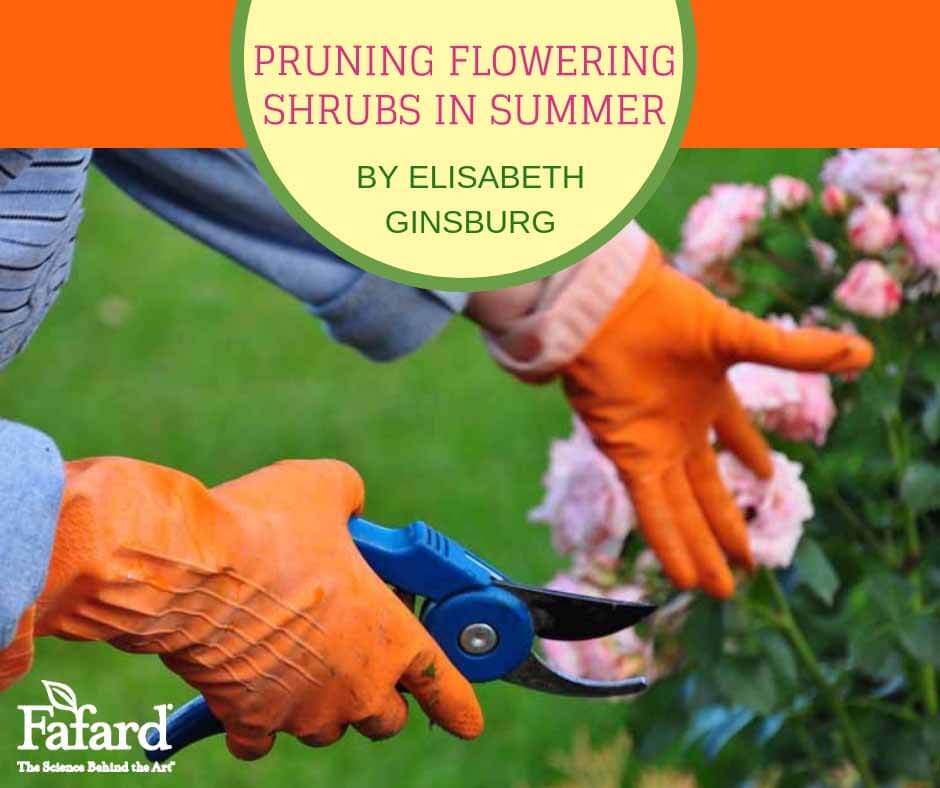
Pruning flowering shrubs makes people crazy. Even experienced gardeners hesitate when confronted with a shrub in need of attention. Why? Most of the pruning-phobic are afraid of cutting off next year’s flower buds or even maiming or killing the plant.
Instead, gardeners should focus on other worries because it is hard to cause death by pruning if a shrub is otherwise healthy. The worst that can happen is that you will prune at the wrong time and lop off developing flower buds, shear what should be selectively pruned, spread disease by poor pruning hygiene, or stunt the shrub for a season. Most healthy plants will respond—sooner or later—with fresh flushes of leafy growth, and you can always learn how to prune the right way to save those buds the following year.
Good Pruning Hygiene
Good pruning hygiene can lessen persistent worries by helping to stave off the spread of diseases. Sharpen pruning tools before making the first cut. Keep a clean cloth and a solution of one part bleach to ten parts water handy to disinfect the blades between cuts. After pruning, water and feed the shrubs with granular or liquid plant food diluted according to the manufacturers’ directions. To help your shrubs look their best, increase the quality of the soil around them by adding good top dressing like Fafard® Premium Topsoil.
Shrubs for Summer Pruning
Midsummer can be an excellent time for pruning flowering shrubs as long as you prune the right plants at the right time. In general, you cannot go wrong if you turn your attention to plants that have bloomed recently.
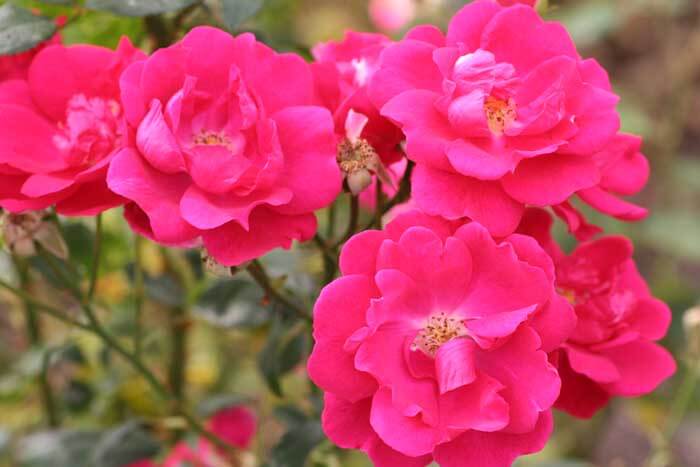
Roses are a case in point. By midsummer, most reblooming roses, including hybrid teas, floribundas, English-type roses, shrub roses, ramblers, and climbers, will have produced one or two good flushes of blooms. A bit of pruning is in order for many of them. The first step in pruning just about anything, including roses, is the easiest—cut away any dead, damaged, weak or crossed canes or stems. The plant will look better almost immediately. Secondly, depending on the size of the rose and its vigor, cut back canes that have recently flowered by one- to two-thirds. A vigorous shrub rose, like ‘Sally Holmes’, needs the two-thirds cut, while ‘Mr. Lincoln’, a well-loved, but relatively sedate hybrid tea, will be content with a light prune of one-third. After the major haircut is finished, trim lightly to shape the bush. (Click here to learn more about rose pruning.)
Once-in-a-season blooming roses are a different matter. If you prize a specific species or variety for its colorful hips or fruits, wait to prune until after those hips wither. If you don’t care about hips, but want a well-disciplined plant, prune now.
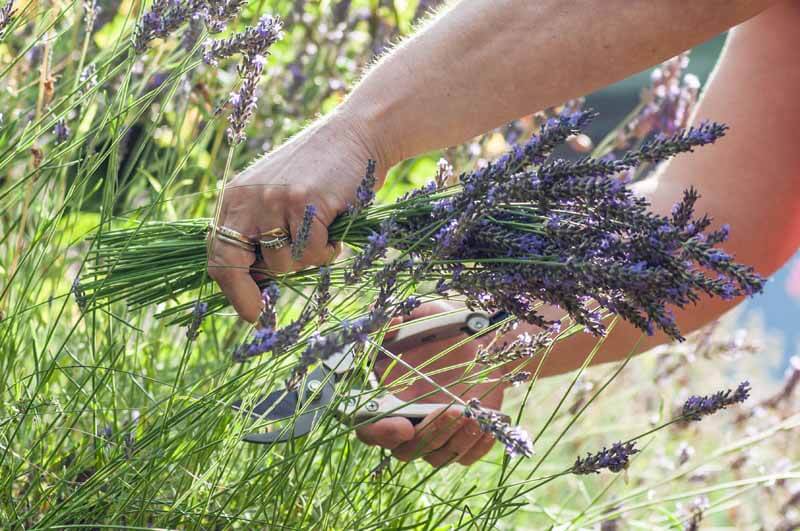
Most people think of lavender (Lavendula spp.) as a perennial plant, but it is actually a subshrub. After producing its aromatic blooms in early summer, it benefits from a good pruning. Old, overly woody stems can be cut back sharply and the old flowers of young vibrant ones trimmed off. Then collect the dried flowerheads for sachets or other uses. (Click here to learn more about the best lavenders for the garden.)
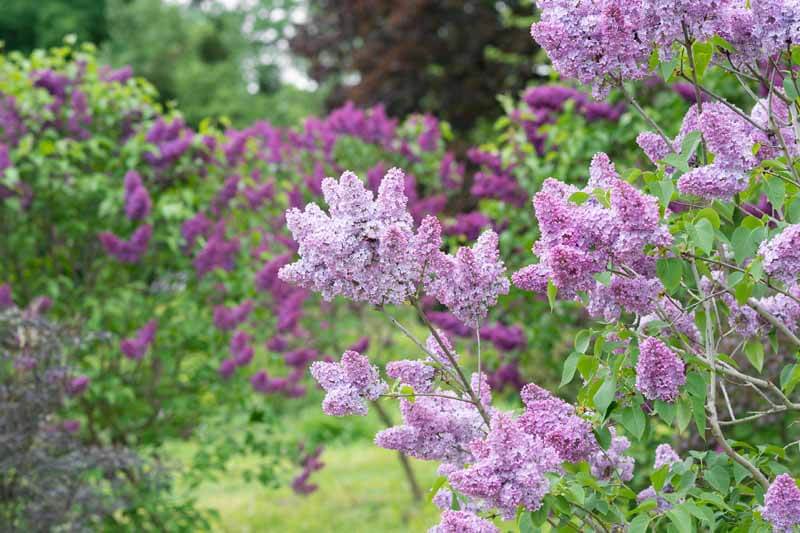
Lilacs (Syringa vulgaris) are one of those shrubs that must be pruned shortly after flowering from late spring to early summer. This is because after flowering they set buds for the next season. The best method for pruning classic lilacs is to remove suckers from the lower trunk and cut unwanted branches back to the main trunk for overall shaping. If a large stem has lost its good looks, it should be cut to the ground to help the shrub maintain a bushier, more appealing habit.
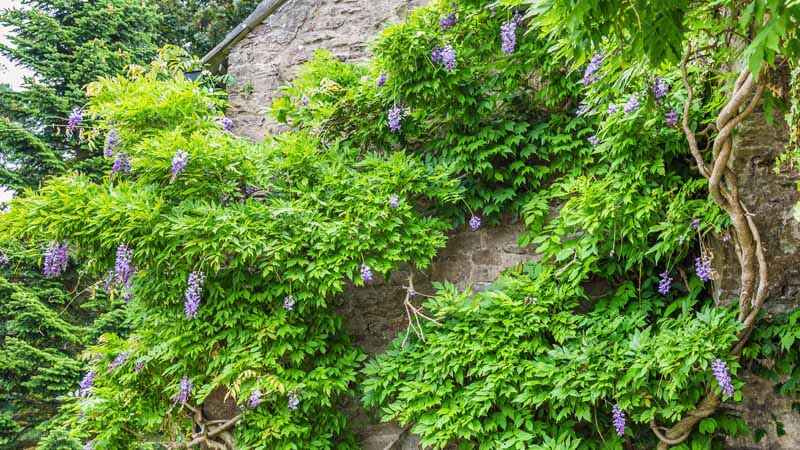
Wisteria is an aggressive, clambering flowering woody vine that can also be treated like a flowering shrub. It absolutely demands pruning, especially if your plant is a Japanese (Wisteria floribunda) or Chinese (Wisteria sinensis) species, both of which will sprout in all directions and vine out and expand to the point of invasiveness. Choose a very strong structure to support a wisteria and train the primary growth to support the rest of the plant. Throughout summer, prune off the long, slender side shoots that will be produced in large quantities. The most common advice is to cut aggressive, unwanted stems back to the main stem every few weeks or so.
Wisteria stems become trunk-like over time and demand strong support and hard pruning to maintain a manageable, reasonable size. The best time to manage overall growth is in late winter when the plants can be hard pruned back by half.
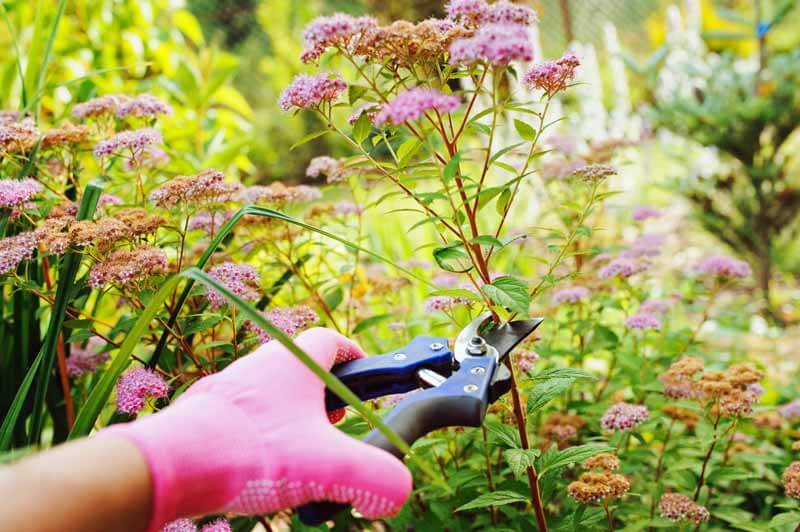
Lovely Japanese spirea (Spirea japonica) provides welcome early summer color with its flattened flowerheads in shades of pink, rose, and white. Once the bloom flush is over by midsummer, it is time for tip pruning. This involves cutting off the spent flowerheads and lightly pruning stems back to the next leaf bud. These shrubs can be sheared if you desire formally clipped shrubs.

Sweetspire (Itea virginica) provides winsome, drooping white flowerheads in early summer. Its arching stems grow upward and outward through summer and are usually ripe for pruning by midsummer. Do this mainly to shape the plant and eliminate the oldest stems. “Shaping” in this case, means pruning the longest, largest unwanted stems back to the main stem rather than shearing. The plants may also spread laterally along the ground and begin to exceed the available space. If this happens, augment normal pruning by using a sharp spade to remove unwanted side shoots at the ground level.

Even experienced gardeners are hesitant when it comes to pruning traditional mophead or lacecap hydrangeas (Hydrangea macrophylla), most require pruning just after flowering. If you like to leave the big, round flowerheads on the stems to dry for added fall and winter interest that’s fine, too. But, once they lose their looks, just trim away the spent flowerheads, but do not trim much below them. New buds have developed on the lower stems, and you will thank yourself next spring for conservative pruning this summer.
While you are trimming off the flowerheads, check for old, excessively woody canes. They can be trimmed back to ground level, which should satisfy almost anyone’s urge to do a thorough job of hydrangea pruning. (Click here for a detailed treatise on pruning many other hydrangeas.)

